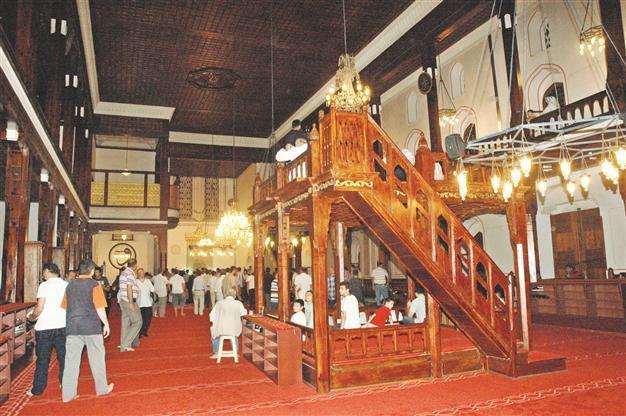Arab Mosque’s ancient frescos hidden on the walls
ISTANBUL - Radikal

The mosque contains a number of frescos that are potentially important to art history. DHA photo
Istanbul’s Arap Camii (Arab Mosque) was recently reopened for worship after extensive restoration work. The mosque contains a number of frescos that are potentially important to art history, but few are aware of the existence of the frescos, because they have been covered over with plaster.
The mosque, located in Beyoğlu, underwent a series of renovations as part of Istanbul’s year as European Capital of Culture in 2010. It was recently reopened with a ceremony in which Deputy Prime Minister Bülent Arınç participated.
The frescos in the mosque were revealed when some of the plaster covering them was broken off in the major earthquake of 1999. The mosque community worshipped for the next 10 years keeping the frescos covered with curtains.
When the General Directorate of Foundations decided in 2008 to restore the mosque, scholars had an opportunity to examine the Renaissance remnants, which were last restored in 1913. The origins of the Arab Mosque actually have nothing to do with Arabs, although it is said to have been the first mosque in Istanbul; it was originally a Dominican church, which was transformed into a mosque after Fatih Sultan Mehmet’s conquest of the city. According to some stories, the mosque took its name after a group of Arabs fled to the neighborhood from Granada.
Gürsel Göncü, the producer of NTV’s History Journal, raised the issue of the frescos in April. “They have all the elements of Renaissance artwork,” Göncü said. The frescos were revealed when some of the plaster covering them was broken off in the major earthquake of 1999. The mosque community worshipped for the 10 years keeping the frescos covered with curtains.
There was nothing wrong with the transformation of the church into a mosque in the 15th century, Göncü said, but it is not right to keep the frescos covered with plaster after five centuries. The frescos are distinctive, in a style comparable to those at the Hagia Sophia.
